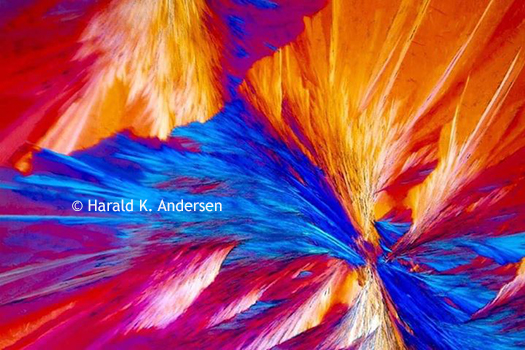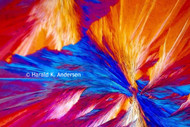Tartaric Acid under the Microscope
Apr 9th 2019
This image of tartaric acid was captured by Harald K. Andersen in Steinberg, Norway. Andersen used a polarizing microscope with a wave plate. The microscope setup had a Nikon 10x objective lens and a 2x photo converter, which ultimately provided a total of 20x magnification on the camera sensor.
Tartaric acid is a white, crystalline organic acid that occurs naturally in many fruits, but especially in citrus, bananas and grapes. Tartaric acid is commonly mixed with sodium bicarbonate and sold as baking powder to be used as a leavening agent when preparing food.

What is a Polarizing Microscope?
Polarizing microscopes use both a polarizer and an analyzer to view waves of light that vibrate in only one direction. Polarizing microscopes are used to examine birefringent materials such as chemicals, minerals, or crystals. Professions that use polarizing microscopes include the pharmaceutical industry, geologists and petrologists.
If you have any questions about polarized light microscopy contact Microscope World.





